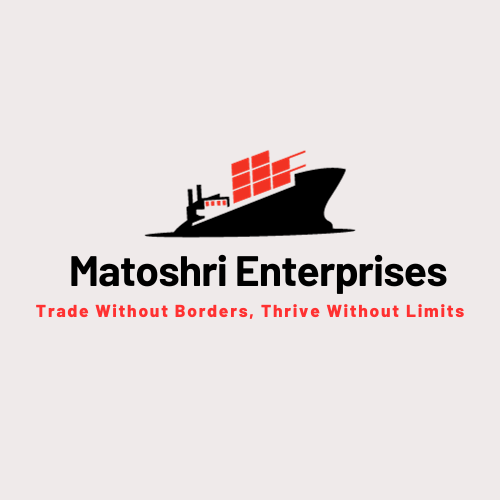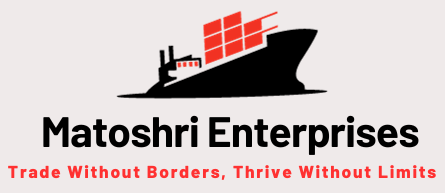Other Products
Pulses
Pulses are a category of leguminous crops that are primarily grown for their dry seeds, which are rich in protein, fiber, and essential nutrients. Some of the most commonly cultivated pulses include lentils, chickpeas, beans, peas, and fava beans. Pulses are an important dietary staple in many parts of the world, particularly in Asia, Africa, and Latin America, where they are a primary source of plant-based protein. They are known for their ability to fix nitrogen in the soil, improving soil fertility and making them an environmentally sustainable crop. Pulses come in a variety of colors and shapes, and they can be used in a wide range of dishes, from soups and stews to salads and curries.
In addition to their nutritional benefits, pulses are also valued for their versatility and affordability. They are naturally low in fat and are an excellent source of complex carbohydrates, making them a good choice for individuals looking to maintain steady energy levels. Pulses are also gluten-free, making them a suitable option for those with gluten intolerance. Their high fiber content aids in digestion and supports heart health by helping to lower cholesterol levels. Moreover, pulses are often used in food security programs due to their long shelf life and the ability to grow in diverse climates. As part of a sustainable and healthy diet, pulses continue to gain recognition for their role in reducing environmental impacts while providing essential nutrients



Animal Feed
Animal feed refers to the food given to domesticated animals, particularly livestock, poultry, and pets, to meet their nutritional needs. It consists of a variety of ingredients such as grains, silage, forage, protein meals, and additives, all designed to promote the growth, health, and productivity of the animals. Common ingredients in animal feed include corn, soybeans, wheat, and various grasses or legumes. The formulation of animal feed is carefully designed to provide the correct balance of proteins, carbohydrates, fats, vitamins, and minerals based on the specific requirements of the animals. For example, dairy cattle require feed that promotes milk production, while poultry feed is often tailored to optimize egg production or meat growth.
The quality of animal feed is crucial not only for the health of the animals but also for the efficiency of livestock farming. Well-balanced feed contributes to better growth rates, improved reproduction, and overall animal well-being. In addition, animal feed can be specially formulated for different stages of an animal’s life, such as starter feed for young animals, grower feed for adolescents, and finisher feed for adults ready for market. Advances in animal feed technology have led to the inclusion of supplements, like probiotics, enzymes, and omega-3 fatty acids, to enhance the nutritional value of the feed and boost animal performance. Additionally, concerns about sustainability have led to research into alternative ingredients for animal feed, such as insect-based protein or plant-based materials, to reduce the environmental impact of animal farming



Chicken Feed
Chicken feed is specially formulated to meet the nutritional needs of poultry, providing them with the essential nutrients for growth, egg production, and overall health. It typically consists of a mixture of grains such as corn, wheat, and barley, along with protein sources like soybean meal or fishmeal. In addition, chicken feed is fortified with vitamins, minerals, and other additives that support bone health, immune function, and optimal egg production. The specific formulation of chicken feed varies depending on the age and purpose of the birds. For instance, starter feed is provided to young chicks to support their rapid growth, while grower and finisher feeds are designed for older birds, ensuring they develop properly before reaching market weight or laying eggs.
Chicken feed is usually divided into categories based on the production type—layer feed for egg-laying hens and broiler feed for chickens raised for meat. Layer feed is higher in calcium to support strong eggshell formation, while broiler feed focuses on providing the necessary energy and protein for fast muscle development. In addition to commercial feeds, chickens may also be given supplements such as grit for digestion or oyster shells for extra calcium. The quality of chicken feed is essential not only for the health and productivity of the birds but also for the quality of the eggs and meat they produce. Advances in poultry nutrition have led to the development of specialized feeds that enhance flavor, reduce waste, and improve the overall sustainability of chicken farming



Roasted Chana
Roasted chana, also known as roasted chickpeas, is a popular snack made by roasting dried chickpeas (also called chana) until they become crunchy and flavorful. Chickpeas are a type of legume known for their high protein content, dietary fiber, and various vitamins and minerals, making roasted chana a nutritious snack option. The roasting process enhances the natural nutty flavor of the chickpeas while also creating a crunchy texture that is both satisfying and easy to enjoy. Roasted chana can be eaten on its own, mixed with spices for added flavor, or incorporated into salads and other dishes for a healthy crunch.
Roasted chana is often seasoned with various spices such as salt, black pepper, chat masala, or chili powder, depending on regional preferences. It is a great option for those seeking a healthy alternative to traditional snacks, as it is low in fat and provides a good source of plant-based protein, making it especially popular among vegetarians and vegans. Additionally, roasted chana is a great source of complex carbohydrates, which provide steady energy. It is also high in fiber, which aids in digestion and promotes satiety, helping to control hunger and manage weight. Roasted chana is not only a tasty snack but also a beneficial addition to a balanced diet



Maida Flour
Maida flour, also known as refined wheat flour, is a finely milled white flour made from the endosperm of wheat grains. It is commonly used in baking, cooking, and making various types of traditional and modern dishes. The process of refining removes the bran and germ, leaving behind a soft, powdery substance that gives maida a smooth texture and a lighter color compared to whole wheat flour. It is a staple in many cuisines around the world, particularly in Indian, Middle Eastern, and European kitchens.
This flour is versatile and can be used in the preparation of a wide range of foods, including breads, pastries, cakes, cookies, and noodles. Maida is particularly popular for making soft, fluffy products like white bread, parathas, and samosas. Due to its refined nature, it has a high glycemic index and low nutritional content compared to whole wheat flour. However, it remains a preferred choice for its ability to create delicate and airy textures in baking and frying



Mango
Mango, often referred to as the “king of fruits,” is a tropical stone fruit known for its sweet, juicy flavor and vibrant golden-yellow flesh. Originating in South Asia, mangoes are now grown in many warm regions across the globe. They are rich in essential nutrients like vitamin C, vitamin A, and dietary fiber, making them both a delicious and healthful choice. With a unique aroma and smooth texture, mangoes are widely used in juices, desserts, pickles, and savory dishes.
There are numerous varieties of mangoes, each with distinct taste, shape, and color. Popular types include Alphonso, Kesar, Dasheri, Langra, and Banganapalli, each prized for its unique flavor profile. Mangoes thrive in hot, dry climates and are typically harvested during the summer months. In global markets, they are a highly demanded fruit due to their taste and versatility, making them a valuable export item for tropical and subtropical countries



Onion
Onion is a widely used vegetable known for its sharp flavor and strong aroma. Belonging to the Allium family, it is an essential ingredient in cuisines around the world, used in both raw and cooked forms. Onions come in various types—red, white, and yellow—each with its own distinct taste and culinary use. They are rich in antioxidants, vitamin C, and sulfur compounds, which offer several health benefits, including boosting immunity and supporting heart health.
Onions grow best in temperate climates and require well-drained soil and adequate sunlight. They are harvested once the bulbs mature and the green tops begin to dry. Onions have excellent storage capabilities and are easy to transport, making them a valuable crop for both domestic consumption and international trade. Due to their high demand and versatility, onions are a major export commodity in many agricultural economies.



Spices
Spices are aromatic plant substances used to flavor, color, and preserve food. Derived from seeds, bark, roots, fruits, and flowers, spices have played a vital role in global cuisine and traditional medicine for centuries. Commonly used spices include turmeric, cumin, coriander, black pepper, cardamom, and cloves—each offering unique taste profiles and health benefits. Rich in antioxidants and essential oils, many spices also possess anti-inflammatory and antimicrobial properties, contributing to overall wellness.
Grown primarily in tropical and subtropical regions, spices require specific climatic and soil conditions for optimal quality. Countries like India, Indonesia, and Sri Lanka are leading producers and exporters of a wide range of spices. Due to their long shelf life and global culinary demand, spices are a valuable agricultural commodity in international trade. Their significance extends beyond cooking to industries like cosmetics, pharmaceuticals, and natural therapies



Apple
Apple is one of the most popular and widely consumed fruits in the world, known for its crisp texture, sweet-tart flavor, and rich nutritional profile. Apples come in a variety of colors and flavors—ranging from sweet varieties like Fuji and Red Delicious to tangy ones like Granny Smith. They are a rich source of dietary fiber, vitamin C, and antioxidants, making them a heart-healthy and immune-boosting snack. Whether eaten fresh, juiced, baked, or made into sauces, apples are a versatile and nutritious fruit.
Apples thrive in temperate climates with well-drained soil and cool winters. Major producers include countries like the United States, China, Poland, and India. The fruit is harvested in late summer to early autumn and is known for its excellent storage qualities, allowing for year-round availability. With strong demand in domestic and international markets, apples play a vital role in fruit exports, offering economic value and consistent consumer appeal



Saffron
Saffron is one of the most precious and sought-after spices in the world, known for its rich golden color, distinct aroma, and subtle flavor. Derived from the dried stigmas of the Crocus sativus flower, it takes around 75,000 flowers to produce just one pound of saffron, making it the most expensive spice by weight. Used widely in culinary dishes, especially in Middle Eastern, Indian, and Mediterranean cuisines, saffron adds a luxurious touch to foods like biryanis, desserts, and teas. It also holds a significant place in traditional medicine for its antioxidant, mood-enhancing, and anti-inflammatory properties.
Saffron cultivation requires specific climatic conditions—cool winters and dry, warm summers. It is primarily grown in countries like Iran, India (particularly Kashmir), Spain, and Afghanistan. The delicate harvesting process is done by hand to preserve the quality of the stigmas. Due to its high value, long shelf life, and global demand, saffron is a prized export commodity. It is not only used in food but also in cosmetics, perfumes, and health supplements, contributing to its widespread commercial appeal




Our Products
Contact Us
contact@matoshrienterprises.in
matoshrienterprises77@gmail.com
+91 99300 67937
+91 95270 74877
